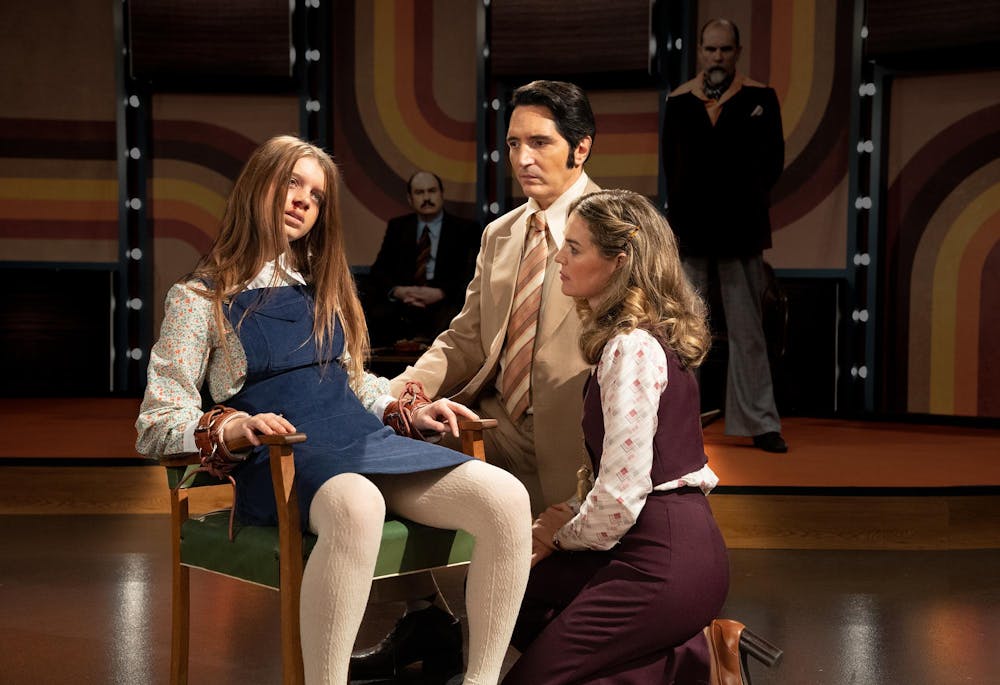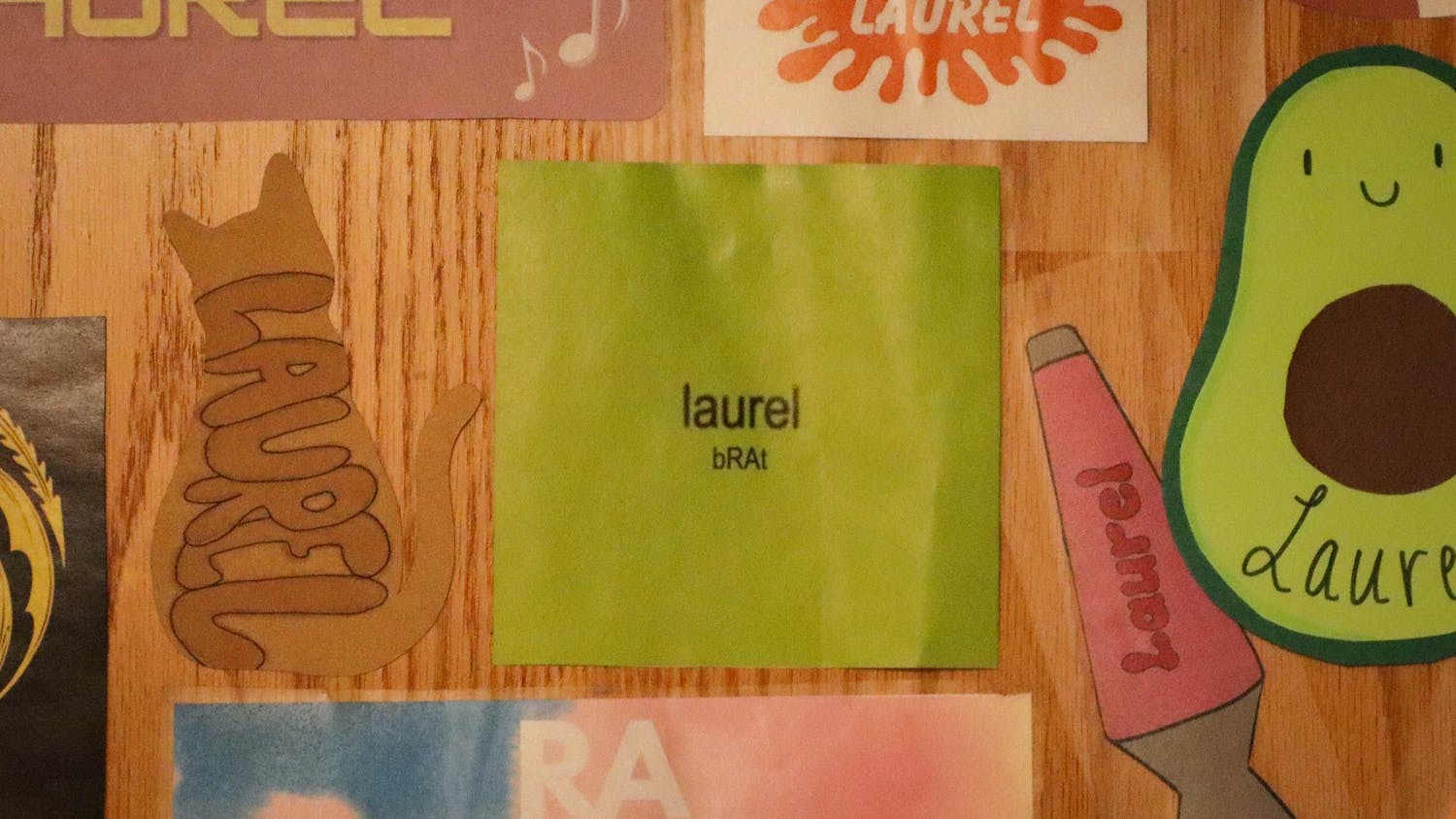It’s rare for an independent film like “Late Night with the Devil” to conjure so much mainstream attention, but, as its ambitious leading man discovers, you can’t dance with the devil without confronting the consequences.
Structured like a pseudo-documentary, the film opens with an exposition-filled prologue about Jack Delroy (David Dastmalchian), the charming host of “Night Owls,” a late-night talk show on the decline. After losing his wife to lung cancer, Jack returns to the stage on Halloween night for a career-defining broadcast he hopes will finally give him the edge over Johnny Carson.
Capitalizing on the public’s fascination with the occult, Jack interviews a touring psychic, a former magician turned skeptic and a parapsychologist and her patient — the sole survivor of a satanic cult’s mass suicide. As ratings soar, a series of increasingly strange events plays out in real time, and Jack begins to sense an evil presence he feels personally tied to.
For a film so keen on emanating a 1970s look and feel (which it does so rather successfully), its controversial usage of artificial intelligence is narratively misguided and unnecessary — a stark representation of the modern mechanisms preventing the film from feeling authentic. It’s an all-around unfortunate situation. Not only does this discourse pull attention away from the talented artists who worked on an otherwise original and inventive film, but it also serves as a reminder that powerful studios aren’t the only ones ushering in the acceptance of A.I. in creative fields.
Independent productions always have tight budgets, but cutting corners — even in seemingly minute ways — opens the door for studios and filmmakers to use A.I. more frequently and less shamelessly. Like the evil entity buzzing through the “Night Owls” studio, this is a beast we should not be eager to unleash.
The A.I. cutaways echo a bigger problem “Late Night with the Devil” has with form. Behind-the-scenes docu-style footage of Jack and the crew trying to make sense of the broadcast’s strange happenings is shown between commercial breaks. These scenes are helpful in fleshing out Jack’s character beyond his television-appropriate persona, and they address some of the plot points left behind by the confines of the found footage format, but they lack the broadcast’s stylistic finesse and consistency.
Behind-the-scenes footage should feel intrusive, like we’re getting an unauthorized peak at the chaotic inner workings of the production. But these scenes are far too formal to be spontaneous, and the abundance of shot-reverse shots and close-ups pulls the viewer from their voyeuristic place in the narrative.
The broadcast itself is a slow-burning pressure cooker of chaos. Watching Jack run through the monotonous formalities of hosting a late-night show in real time is a purposefully tedious task. Even though it takes a while for things to escalate past the point of no return, the “Night Owls” set is embedded with dread.
Dastmalchian embodies the late-night host’s covert smarminess with restraint. On air, he’s casual and refreshingly sincere; behind the scenes, he struggles to maintain his composure. The prologue hints at the skeletons in Jack’s closet, but Dastmalchian conceals them with his charming facade.
It’s never difficult to empathize with Jack because of Dastmalchian’s sincerity, even in the explosive finale. Jack faces the cosmic undoing of his own creation as the evil entity wreaks havoc in the studio through a rapturous blend of practical and visual effects. It’s an inevitable conclusion — the prologue’s heavy-handed exposition dump sets things up a bit too predictably — but a fitting end to a film that puts a price tag on spectacle and success.
Although its reception has been soured by the very avoidable A.I. controversy, it’s irresponsible to dismiss the film altogether. Anchored by Dastmalchian’s standout performance and first major leading role, “Late Night with the Devil” questions our fascination with spectacle by making the viewer complicit in the action.






